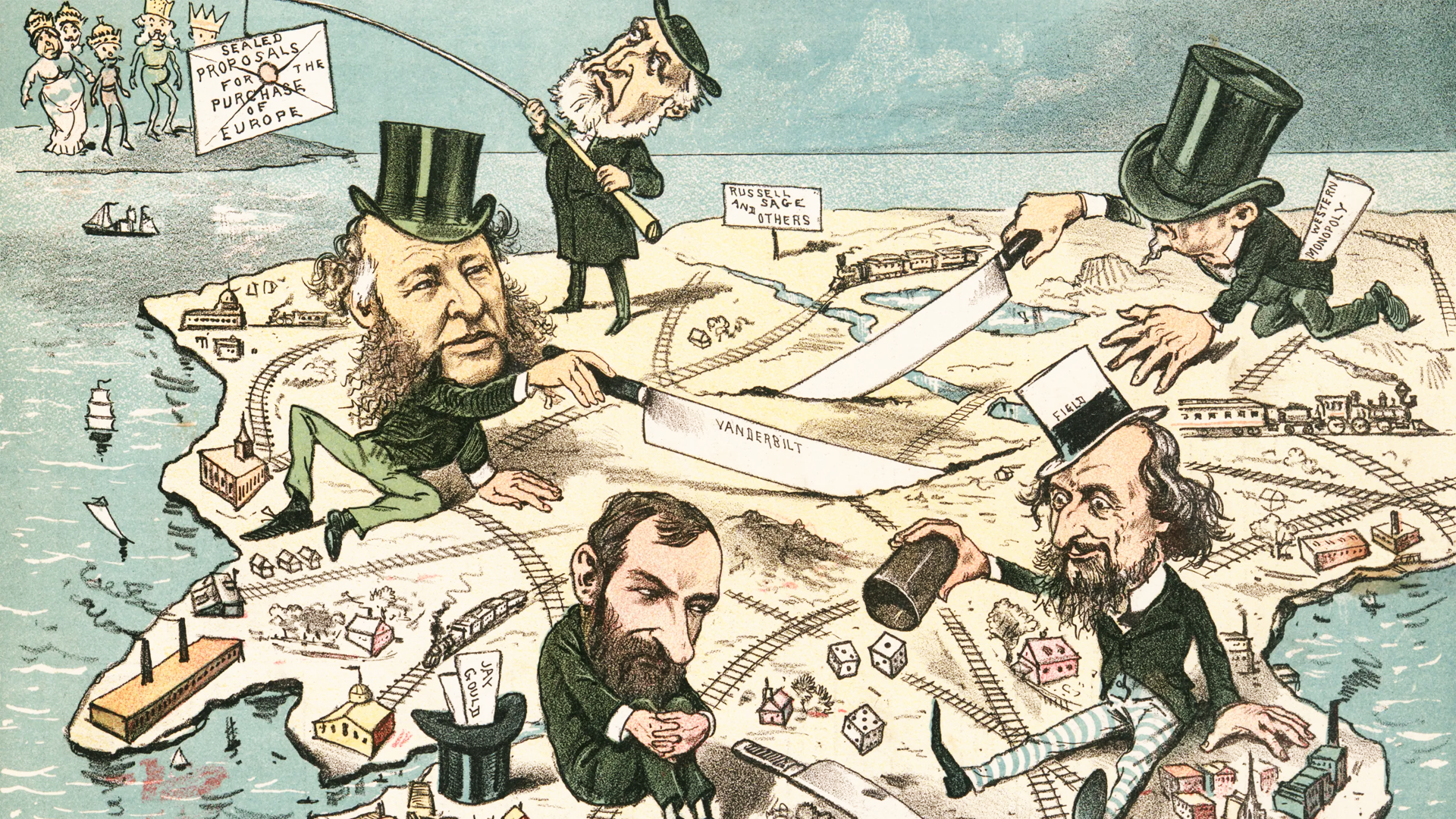The Gilded Age, Industrialization, and the 'New South'

The Gilded Age was a period of explosive industrial growth, urban expansion, and technological innovation in the United States.
The Dive
The term 'Gilded Age' was coined by Mark Twain and Charles Dudley Warner in 1873 to describe a society covered in a thin layer of gold that concealed deep cracks of inequality, corruption, and exploitation beneath.
Nationally, this era was powered by rapid industrialization, business consolidation, and an expanding railroad network. Factories replaced small workshops, and corporations replaced small businesses. This 'managerial revolution' created jobs not only in production, but also in management, clerical work, sales, and accounting.
In the South, leaders promoted the 'New South' vision: a move away from a purely agrarian economy toward modern industry. North Carolina became a leader in this shift, with Durham’s American Tobacco Company dominating the tobacco market, and textile and furniture factories booming in towns like High Point.
Economic growth was measurable, railroad miles expanded, factory output soared, and cities grew. But the benefits were not evenly shared. Many poor white farmers turned to mill work for steady pay, often bringing wives and children into the labor force. Workdays could last 12 hours or more, wages were low, and conditions were dangerous.
African Americans found fewer opportunities in the 'New South.' Jim Crow laws, white supremacy, and systemic discrimination pushed many into low-paying, unsafe jobs or back into agriculture as sharecroppers, locked into cycles of debt and poverty.
The Gilded Age also brought cultural shifts: the rise of a consumer economy, new advertising strategies, and leisure activities for a growing middle class. Department stores, mail-order catalogs, and mass entertainment reflected a new national culture.
Yet this was also an age of resistance and reform. Labor strikes erupted over wages and working conditions, though workers often faced violent suppression. Farmers, frustrated with high railroad rates and government inaction, organized movements like the Populist Party to challenge the two-party system.
The Gilded Age reminds us that innovation can spark both progress and inequality. For every story of industrial triumph, there were countless stories of exploitation forcing us to ask, even today, how we can balance economic growth with fairness and justice.
Why It Matters
The Gilded Age reveals how industrial progress can uplift some while leaving others behind. Understanding the successes and failures of this era helps us think critically about how to create a future where economic growth benefits everyone, not just those at the top.
?
Why did Mark Twain and Charles Dudley Warner choose the word 'gilded' to describe this period?
How did the 'New South' vision differ from the pre-Civil War Southern economy?
What challenges did workers—especially women and children—face in mills and factories?
How did Jim Crow laws shape opportunities for African Americans in the South?
What parallels can we draw between the economic inequality of the Gilded Age and today?
Dig Deeper
Gilded Age politics, economic change, and the rise of inequality in late 19th-century America.
An overview of the post-Reconstruction expansion of industrialism in the United States.
Related

The Market Revolution: How Innovation Transformed America
In the early 1800s, America changed from a land of small farms to a booming nation of factories, railroads, and markets. The Market Revolution connected people, goods, and ideas—while also revealing deep inequalities in who benefited from progress.

Early Industry and Economic Expansion (1800–1850)
From gold mines in North Carolina to textile mills and telegraphs, discover how the Market Revolution transformed the way Americans lived, worked, and connected in the early 19th century.

Jim Crow and Plessy v. Ferguson
After Reconstruction, the South built a legal system to enforce racial segregation and strip African Americans of political power. The Supreme Court’s Plessy v. Ferguson decision in 1896 made 'separate but equal' the law of the land—cementing injustice for decades.
Further Reading
Stay curious!

